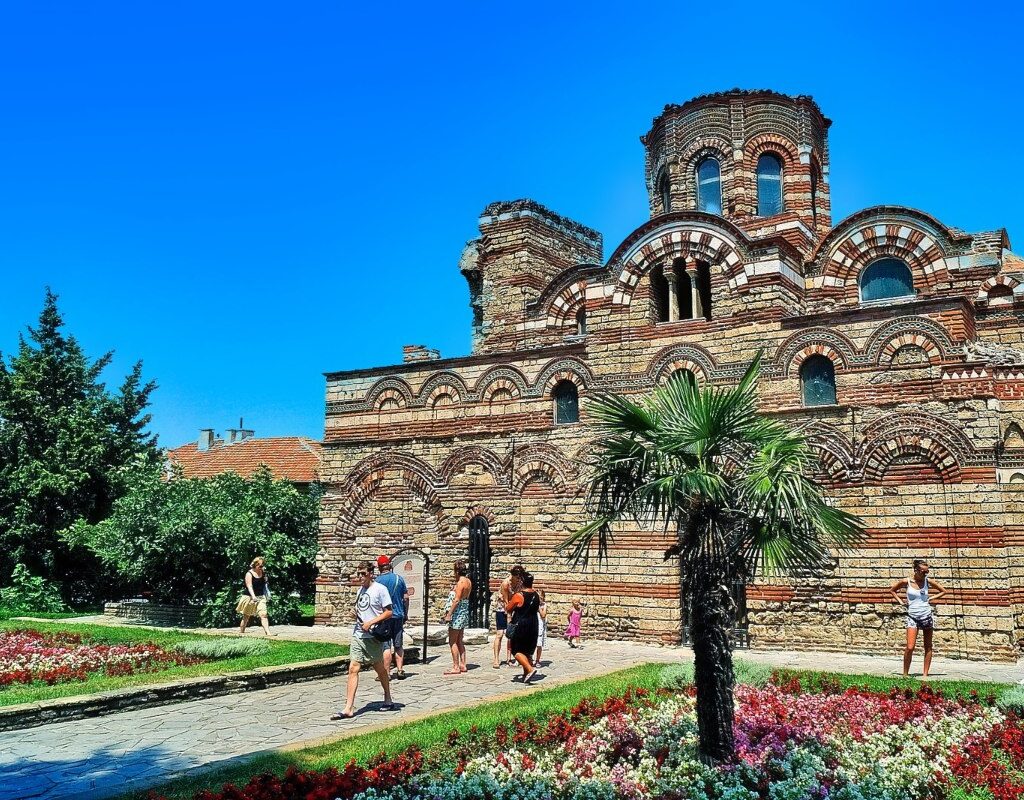Seen from afar, Nesebar reveals itself as an imposing silhouette. It appears as a flat promontory that seems to play hide-and-seek amidst a sea of houses and roofs. From this perspective, with its characteristic ports, it could easily be mistaken for other fishing villages scattered along the Bulgarian Black Sea coast.
Tourism in Nesebar: Historical Gem of the Black Sea
However, its geographical uniqueness, that narrow strip of sand serving as a bridge between the peninsula and the mainland, sets it apart and creates an unforgettable silhouette.
At first glance, its charm appears to be that of a typical, picturesque town rich in history. Nevertheless, a closer look reveals an unparalleled architectural and cultural legacy. This is a testament to a turbulent and splendid past marked by exchange and confluence of cultures.
Access to Nesebar, especially during the summer months, is a bustling journey. Tourists eager for history and charm pass through shops brimming with souvenirs and local curiosities.
But hidden behind this mask of modernity lies a heritage jewel. Nesebar boasts the most impressive collection of wooden architecture on the entire Black Sea coast, interspersed with imposing remnants of medieval churches.
Nesebar: Millennia of Civilizational Encounters and Black Sea Gem
The city of Nesebar has withstood the test of time. Its origins date back four thousand years when it was established by settlers from Megara.
It was here, in the waters of the Black Sea, that Greek civilizations came into contact with the peoples they considered barbaric. They realized the cultural wealth of these groups.
Since then, Nesebar has been the epicenter of civilizational encounters. It is a melting pot of cultures that has left its indelible mark on architecture, art, and daily life.
Nesebar’s importance grew exponentially during the height of the Eastern Empire, with Constantinople as its resplendent capital. During this golden age, between the 13th and 14th centuries, numerous churches were erected. They were later adorned and decorated.
Among them stand out the Pantocrator, the Archangels Michael and Gabriel, St. John, St. Paraskeva, St. Todor, St. John the Baptist, and undoubtedly, St. Stephen.
Nesebar: UNESCO Heritage and Crossroads of Black Sea Cultures
Although many of these churches are in a state of ruin, their remains still shine with past splendor. The walls are decorated with intricate ornaments, arcades, swastika crosses, and vibrant ceramics of a captivating turquoise color. But of all these temples, the most impressive is, without a doubt, St. Stephen.
Its 16th-century murals are a living testament to the artistic mastery of the era. They take visitors on a journey through time.
Nesebar is not defined solely by its religious heritage. UNESCO recognizes Nesebar as a world heritage site also for its unrivaled collection of wooden buildings. These structures, mostly from the 19th century, bear witness to Bulgaria’s National Revival, a period of renewed cultural interest and pride after centuries of Ottoman rule.
These houses, which belonged to merchants and landowners, reflect the opulence of a bygone era and the craftsmanship of the time. They serve as a constant reminder of Nesebar’s rich history and its role as a meeting point between different civilizations.
In summary, Nesebar is not just a picturesque town. It is a living museum, a testament to the passage of time and the cross-cultural interactions that have defined the Black Sea region for millennia.

